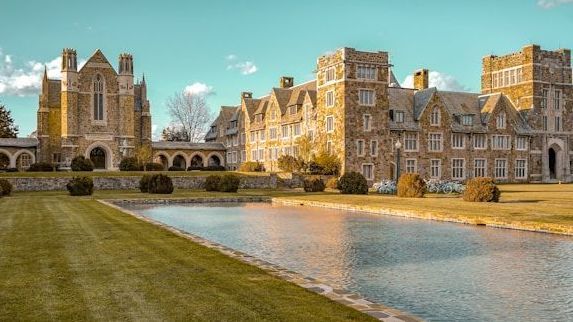Making the Most of College Visits
A high school senior and her parents walked into the dining hall at Reed College and found many students eating alone. That was all they needed to see. While the intellectual rigor of the school appealed to her, this student also wanted a more social environment, and decided this wasn’t the place for her.
Atmosphere is something you don’t get from viewbooks and websites. There’s nothing like a campus visit to find out if a college is a good fit.
Often, students don’t know what they really want until they see a college. One student loved the idea of a lush, sprawling campus. But when she visited Connecticut College, with its 700 acres of greenery, woods and water, she thought it was too quiet and decided to look at schools with a livelier, bustling atmosphere.
The more colleges you visit, the better you get at evaluating whether the school is a match. That’s why it makes sense to start with local colleges, even if they’re not on your list. If you live in Los Angeles, visit UCLA and Occidental to get a sense of how a large public university is different from a small, private college. After visiting a couple of colleges, you’ll know what to look for, and will be in a better position to evaluate what you’re seeing.
On college trips, it’s tempting to see as many schools as possible. But visiting more than two schools a day becomes a frantic rush from one college to the next, with no time to fully experience each school. Plan on spending at least three hours on campus to allow time for a tour, information session and lunch in the dining hall. If there’s time, parents should give their child an hour on his own to imagine himself as a student at the school, while they check out the surrounding community.
While student tour guides are very knowledgeable, they’re also boosters of the school. That’s why it’s important to talk to other students. They have all gone through the college application process in the last few years, and they’re usually happy to share their wisdom. Ask what other colleges they applied to and why they chose this one. How has the school met their expectations or disappointed them? What kind of person is a good fit for this college? What do they love about the school and what would they like to change?
You also want to know if students have trouble getting courses they want. How many classes are taught by teaching assistants rather than professors? Get a feel for the intellectual climate by asking what the most popular classes are, how much time students spend studying, and what they do on weekends. Check bulletin boards for information about club meetings and internships. Pick up a school newspaper to see what issues are hot on campus as well as what lectures and concerts are scheduled.
For a prospective student, it comes down to a gut reaction. Does she feel excited being on this campus? Can she see herself walking to class, hanging out with these people? If she feels good about herself while she’s visiting this college, if she sees people she’d like to get to know, she’s that much closer to making a good match.










